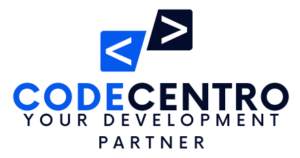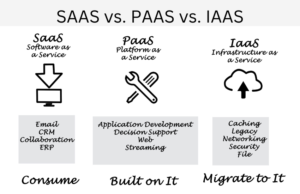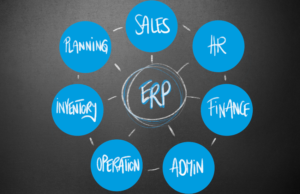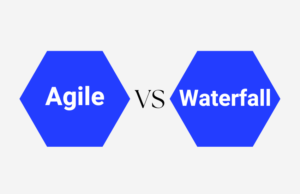The answer to this question is not as simple as you might think. When deciding whether an agile vs. waterfall development method is best for your project, there are some things to consider.
The secret to success is being able to explore different formulas, designs, and processes until you come up with one that works. But that is not always possible when you have a single team working on the same project.
That’s why there is a need for a more efficient way of doing software development. That’s where the agile project development methodology comes into play.
With the ever-increasing business complexity in the technology industry, it has become increasingly difficult to deliver projects that meet organizational goals. Organizations have realized the enormous benefits of adopting agile project development methodologies over traditional or waterfall methods. Agile projects involve using small, cross-functional teams, each with a specific set of skills. These teams work together, adjusting their tasks and delivering projects faster.
Agile project development involves using different agile methodologies, such as scrum methodology, scrum project management, and agile scrum methodology. Scrum methodology consists of the use of scrum teams. Scrum teams only care about meeting the product backlog. They change tasks and deliverables based on how they’re doing and what feedback they get from customers.
Key Differences between Waterfall and Agile Methodologies
Waterfall project development methodology begins with rules and moves into the planning and development stages. The waterfall model is linear, and sequential teams don’t move to the next step until the previous one is complete. It is also known as top-down development, functional decomposition, and sequential decomposition.
Whereas the Agile project development methodology employs an iterative approach in which multiple components develop concurrently. It works well for complex projects, projects that involve rapidly changing requirements, and projects that require frequent releases.
The waterfall approach uses the following steps:
In agile project management, development is done in sprints, which are short, fast-paced, fixed-duration iterations. Each sprint has a well-defined goal and scope. The project team develops the requirements in sprints, then tests each function.
However, the waterfall testing phase comes after the building phase.
The agile approach is very flexible, as it offers changes during the development phase, whereas the waterfall approach doesn’t provide any changes once the development starts.

What Are the Pros of the Agile Project Development Methodology?
Agile software development methodologies are the new standard for IT projects. Companies can quickly deliver software that meets business needs without sacrificing quality or deadlines by using this collaborative, step-by-step process.
Collaboration
Agile development methodologies focus on the collaboration of agile team members. Before beginning a project, the team will spend time planning out the project’s features, requirements, and scope. The team then works together to create a design document, which outlines the details of the project.
Flexibility
This is much more flexible than a waterfall approach, where developers spend months planning out every detail before coding.
Smaller, Incremental Releases
Once the first design document is created, the team will work to implement the first bits of functionality. These releases are called “sprints,” and the first sprint results in a minor milestone release.
Quality
The developer then continues working on the project, implementing more functionality and releasing frequent updates. As the project continues, the project team gains valuable insight into the project and keeps it moving in the right direction.
Time to Market
In the agile development approach, time to market is less than in the waterfall approach because of its fast-paced, parallel, and focused working nature.
Feedback
With each new release, the team gathers valuable feedback from end users. This feedback is then used to improve the project.
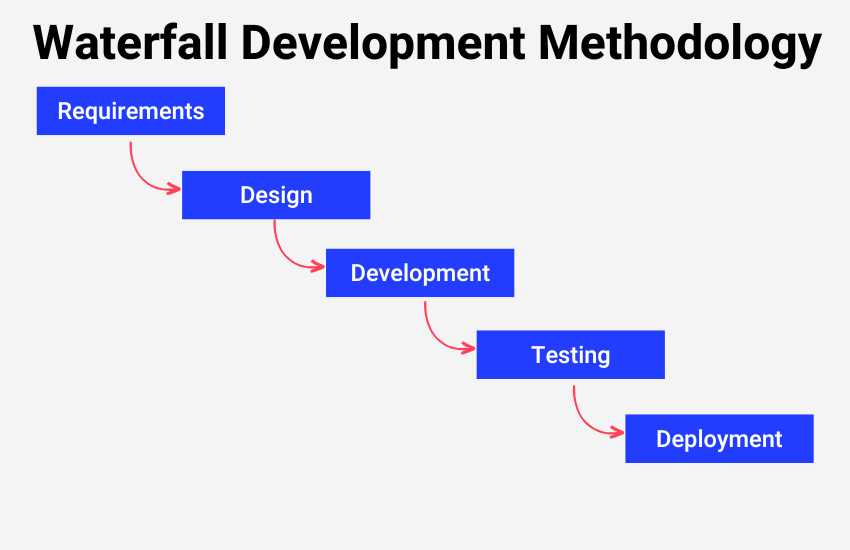
What Are the Pros of Waterfall Project Development Methodology?
Waterfall project development is one of the easiest methods. It’s simple to understand and implement because there are only two phases: planning and execution. The planning phase begins when you decide what needs to be done and who should do it. Then you assign tasks to team members. Once those tasks are completed, the results are reviewed and approved. Finally, the next task is assigned. This cycle continues until the project is complete.
This approach is ideal when developing small-scale applications because it allows developers to work through each step of the process together. This helps ensure that the final product meets the client’s needs and expectations.
Waterfall project development is ideal for managing dependencies between tasks. For example, if task B depends on task A, then task B must be completed before task A begins. Waterfall project development makes it easy to track these types of dependencies.
What Are the Cons of Agile Product Management Methodology?
Agile methods aren’t very helpful when you’re developing a small app because there isn’t enough time to break down tasks into manageable chunks. Instead, you need to create a plan upfront and execute it.
Another problem is that agile methods require a lot of communication between members of the team. The team needs to communicate frequently throughout the project to ensure everyone is working toward the same goal. This makes it hard to keep track of progress because each member of the team may not be communicating effectively.
One drawback of the agile method is that it requires significant investment in training and tools. Also, agile doesn’t allow managers to control every aspect of the project. Instead, agile focuses on providing transparency and letting teams decide when to proceed with certain tasks. This makes it harder for managers to ensure quality standards are met.
In the agile approach, a project can get down the road if the Project manager doesn’t understand what is appropriately required.
What Are the Cons of Waterfall Product Management Methodology?
Waterfall methodologies are great for small projects because they’re simple and straightforward. But when you scale them up to medium or large projects, they become unwieldy and inefficient.
When requirements aren’t clearly defined, waterfall development becomes ineffective. This is because the project manager must guess what the client wants. The result is that the project manager may end up building features that the client didn’t ask for, wasting resources and delaying the project.
This approach is great when things go smoothly, but it doesn’t work well when things are not going according to plan. Product managers who use this method tend to be overly cautious and risk-averse because it is very difficult to go back and make changes in already completed phases.
The waterfall approach testing process begins at the end of the development process, and there are good chances of bugs in development, which could be costly to fix.
Each phase is distinct and must be completed before the next phase begins. This sequential process has been effective for decades, and it is relatively straightforward to implement. However, a waterfall system can be inflexible. It can create bottlenecks and delays when new requirements emerge during the implementation phase. Waterfall also forces each phase to be complete before moving on to the next phase. This feedback loop can slow down the flow of projects.
How Do You Know Which Project Development Methodology Is Best for Your Project?
Project development and management methodologies can help you organize the project, stay on track, and deliver on time and within budget. Choosing a suitable methodology for your project can significantly impact your progress.
Waterfall vs. Agile approaches: When choosing a development project methodology, you need to think about the approach. Waterfall methodology prioritizes sequential execution and follows a fixed sequence of phases, including initiation, planning, design, development, testing, and implementation. Using this approach, you typically have a fixed budget for each project phase, and the project is completed in its entirety before moving on to the next phase.
Agile methodology: Agile method tools like scrums, iterations, and iterations are used to complete a project. The emphasis is on collaboration, flexibility, and adaptability. With agile, you have multiple delivery phases rather than a single project delivery phase. This allows the team to work on different components of the project simultaneously. Agile also includes continuous testing throughout the project life cycle, allowing you to make changes and improve the product before final delivery.
When to Use Agile vs. Waterfall Project Development Methodology?
The agile vs. waterfall debate continues today. Project managers, dev teams, and clients all have opinions on the agile vs. waterfall debate.
We asked experts in the field of project management: When and why would we use the waterfall methodology?
They shared their insight:
Waterfall methodologies have been around for a while; they were popular during the 1990s because they offer a rigid process with clearly defined steps. They tend to be less flexible than other types of methodologies, however, and require significant up-front planning. This makes them less than ideal for many modern-day projects.
The waterfall methodology is helpful in situations where the project is only moderately complex and has a clear beginning, middle, and end. For example, it might work well for a software project with an initial phase of planning followed by programming, testing, and a final phase of installation.
On the other hand, waterfall methodologies might not make sense when you’re working on a constantly changing or evolving project. In these situations, the waterfall method doesn’t work well because the project scope may often change, making it hard to plan.
Agile works better for projects with changing objectives and incomplete requirements. If there is much uncertainty about how the project will progress, an agile approach will allow you to adapt to changes more easily.
If you use a hybrid approach in which both agile and waterfall methods are applied together, then the final product is likely to make good use of the strengths of both methods.
Projects for Which the Waterfall Approach Is More Appropriate
- Projects with well-defined project requirements, such as detailed user stories.
- Projects with a well-established team, with smaller teams working on smaller segments of the project.
Use Agile If
- The requirements are incomplete or changing.
- The requirements are unclear or poorly defined.
- The complex and Large scale project
- Large changes are expected in the project.
Agile Team Roles
Scrum – an agile method for delivering IT projects – is an iterative process, with each “sprint” lasting around one to four weeks. The scrum method has three roles: product owner, scrum master, and development team.
Product Owner – The product owner’s main role is to clearly articulate the scope of the project. The product owner works with the scrum master and team to ensure that each iteration of the sprint delivers the desired functionality. The product owner also plays the role of business analyst and keeps the project on track.
Scrum Master – The scrum master acts as a facilitator, managing the team and steering the project through each sprint. Scrum masters run team meetings, give tasks to team members, and make sure everyone stays on task during the sprint.
Development Team – The development team works on the functionality of the project, adding features and completing tasks within the sprint.
Agile Scrum Project Management Methodology
This approach to software development focuses on incremental delivery, collaboration, and team empowerment. It’s inherently flexible, easily scaled, and adaptable. There are three main tenets to using Scrum for a project:
1. Individuals and interactions over processes and tools
2. Working software over comprehensive documentation
3. Customer collaboration over contract negotiation
In short, Scrum is about building the right thing and doing it right, using feedback to improve continually. Agile starts with small incremental changes in a development cycle and iteratively delivers business value.
The Agile development process is broken down into four iterative steps: Planning, development, testing, and delivery.
1. Planning: The planning stage includes four different activities:
a) Scrum master: The Scrum master is responsible for facilitating the team, facilitating meetings, and ensuring that the team adheres to the Scrum framework.
b) Product owner: The product owner defines the stories, prioritizes them, and delegates the development team to complete the stories.
c) Team: The team is responsible for delivering the product.
d) Stakeholders: Stakeholders – internal or external – provide content, feedback, and support for the project.
2. Development: The development team begins development by collaboratively creating, reviewing, refining, and prioritizing a list of stories (the product backlog).
3. Testing: During testing, the team collaborates with the product owner to validate the product.
4. Delivery: The product owner collaborates with the customer to validate the deliverables.
The Agile project development process is iterative. It requires frequent collaboration between the team and stakeholders (both internal and external to the organization).
This not only allows the team to find and address potential issues but also to help develop and enhance any processes that may be unclear or ambiguous.
The agile development process is simple and straightforward. It is an iterative and continuous process that continuously evolves with the project, ensuring it seeks feedback and incorporates it into each iteration.
“The Agile project development process is collaboration-driven. Period.”
This is an extreme departure from the traditional approach of waterfall-style development methodology. In a waterfall-style development methodology, there are typically longer periods of time.
Wrapping It Up
- The Agile methodology is favored for software development projects because it allows for changes and adaptations during the project, whereas the Waterfall methodology doesn’t allow changes in the previous phase.
- For projects with shorter timelines, the Agile method is preferred, while the Waterfall method is preferred for projects with longer timelines.
- The Agile methodology is favored for projects with less clearly defined requirements, whereas the Waterfall methodology is favored for projects with more clearly defined requirements.
Also, Read This: 13 Reasons Why Software Projects Fail & How To Prevent Your Software Project From Failure
